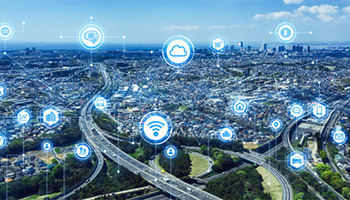Project Introduction
Social Big data related Project
Development of a Real world Data Sharing Platform

Project Summary and Anticipated Outcomes and Goals
We are collaborating with local authorities and other organizations to empirically develop a data-sharing infrastructure system that will enable efficient collection, situation assessment, and analysis of constantly changing real-world conditions, including roads, traffic, and other forms of social infrastructure.
Through this, we are proposing a methodology for open and reliable public data sharing and utilization, and building an infrastructure system for data sharing around the concept of community development through “the collaboration of diverse actors” (a way in which local people as well as the government form the concept of the “public”), which is a national goal.
Project Background
The current social situation of accelerating population decline and uneven distribution means that public services, which need to be further expanded, are supported by an ever dwindling workforce in the younger generations. Faced with aging social infrastructure and a challenging financial situation, it is increasingly difficult for governments alone to maintain public services. Therefore, in order to maintain and develop the community, participation must be facilitated not only on the part of the government but also many other stakeholders including local businesses, citizens, visitors, and others. These stakeholders’ acquisition and provision of local data in their daily activities, and the handling of this data in an open manner should enable efficient and effective problem solving and the creation of new innovation through use across multiple disciplines.
Project Research and Development Content
Road and traffic use, for example, are foundational social activities. Crowd-sensing methods enable high-frequency, wide-area monitoring of road surface and traffic conditions. Previously, these could only be surveyed by government agencies using highly reliable but expensive methods. Using common devices such as smartphones, data can be collected easily and over a wide area. The sensor data (including position, acceleration, and images ) collected by these devices, and the events extracted from them are also converted into data. We are developing a platform system that shall enable data collection and provision to a diverse range of users with wide application prospects.



